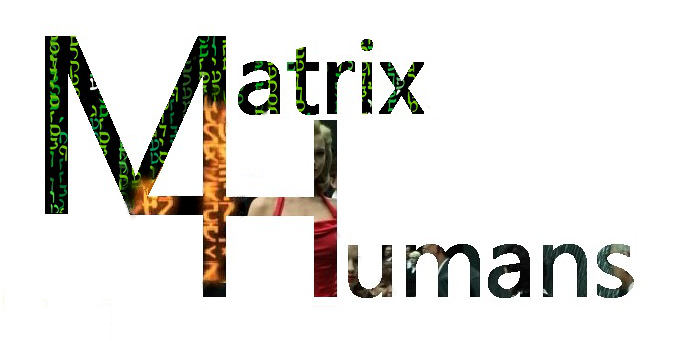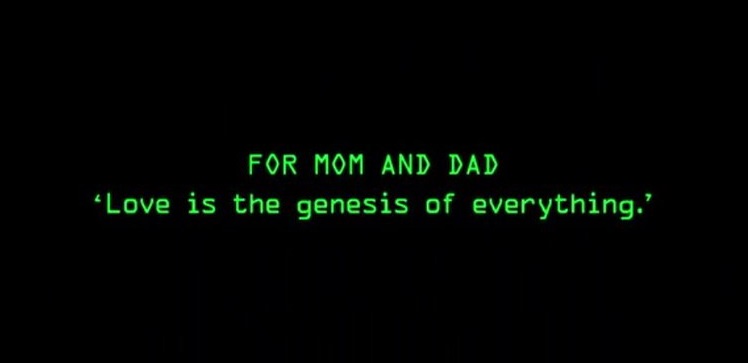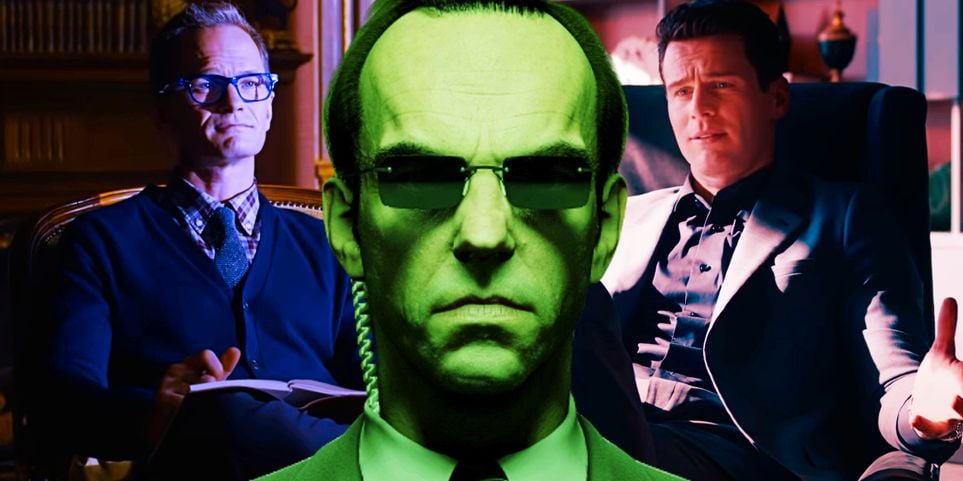One of the bigger discussion topics emerging from the end of The Matrix Resurrections is the empowerment of Trinity. Not only does she have the ability to fly as Neo did in the previous movies, but she is also depicted as being ‘above’ him in the dramatic scene following them leaping off the building.
Further, the character of the Analyst made the following statement to Neo:
“I realized … it was never just you. Alone, neither of you is of any particular value. Like acids and bases, you’re dangerous when mixed together. Every sim where you two bonded… Let’s just say bad things happened.”
All of this has spawned new questions, including:
- Is Trinity actually “the One?”
- Are she and Neo the two halves of the One?
- Is she a superior version of the One, as she held up Neo at the end of the latest movie?
- How is any of this significant to the Matrix and where the story may next be going?
To understand this, and what the future holds, we have to go back to the past.
A Quick Review of How We Got Here
Additional background to this material was discussed in our previous article, Love is the Genesis of Everything. Be sure to check that out.
This fourth stage of the Matrix story has the “Path of the One” reaching the fourth soul level of Chaya, meaning ‘life,’ and the level of the World of ‘Existence.’ (These two concepts parallel each other, and we will often refer to them simultaneously.)
Reviewing how the Path of the One has progressed through the four movies will provide important information related to the rise of Trinity and more.
Once again, the chart we are using through this series helps see these connections through the films.
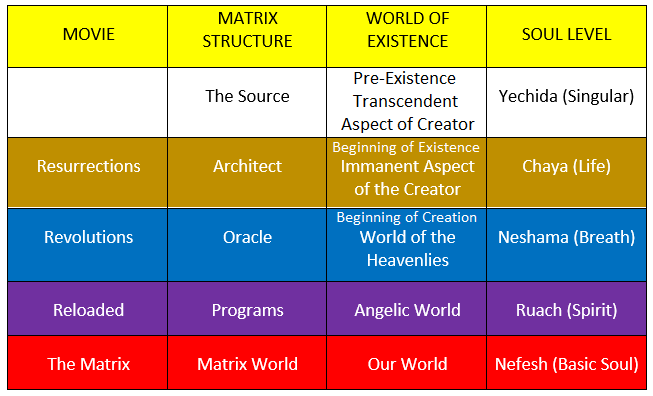
Down the Funnel We Go
Referring to our chart above, The Matrix Resurrections brings us to the level closely associated with the Architect/Analyst character. Thus we find him in a major role in this film.
In kabbalah, this world is called Atzilut, which means ‘nearness,’ as it is ‘nearest’ to the Source of all existence (the transcendent aspect of the Creator, at the top of our chart). As everything comes into existence from this point, it is also called the World of Existence.
Everything in the World of Existence is in a single unified state, prior to the next world of Creation (‘Beriah’) where differentiation begins. This parallels the concept of the Big Bang, which maintains that the universe began as just a single point, then expanded.
As this World of Existence is closest to the Source, the Architect (now the Analyst) was impacted by the quintessence of what preceded it/him. The Matrix could not exist amidst such perfection.
We see a similar development with the Matrix with the ‘single-mindedness’ of the Architect being followed by the Oracle and her ability to understand the varied aspects of the human psyche.
Recall how in The Matrix Reloaded, the Architect mentioned there had to be a ‘lessening’ of perfection – a constriction (tsimtsum), for the world of the Matrix to be able to exist and function properly.
The first stage of this constriction was the Oracle:
The first Matrix I designed was quite naturally perfect, it was a work of art – flawless, sublime. A triumph equaled only by its monumental failure … I have since come to understand that the answer eluded me because it required a lesser mind, or perhaps a mind less bound by the parameters of perfection.
This process continued in stages. The world of the Oracle was followed by another constriction creating the Program world. Then came the final stage – the world of the Matrix. By this point, there was near-total concealment of true reality.
With each constriction, we move further from singularity into greater differentiation. This is how things unfolded regarding the Matrix framework of the Architect, Oracle, programs, and the Matrix.
One tsimtsum after the other. More otherness. More opposites. More binary.
Turnabout is Fair Play
The Path of the One goes in the opposite direction, from the Matrix in the first movie, through the multiple dimensions of the program world in The Matrix Reloaded, followed by the open revelations of the Oracle to Neo, (once he was ‘ready’), in The Matrix Revolutions.
What’s important to know here, is that the same force of tsimtsum/constriction, that was behind the creation of the different worlds of existence, is utilized to “return to the Source.” At each level, Neo’s false views of reality, have to be constricted, “making room” for the truth.
Sometimes he takes the initiative on his own. At other times, he faces barriers, both external and internal, that cause him to reevaluate. Each time he does this, he is ready for the next step on the Path of the One.
Going back to the third movie, Neo’s ‘readiness’ to be told everything by the Oracle, was related to his reaching the third level of the soul – the Neshama. This is the height of personal consciousness a person can attain in life. This is why he was ready to get the “full explanation” from the Oracle.
This leads us to one of the biggest differences between the trilogy and this fourth movie. The Matrix Resurrections is less about Neo’s personal consciousness than it is about everything starting to come together, via a collective consciousness. The latter corresponds to the fourth soul level of Chaya (and World of Existence).
As discussed in our earlier articles, this fourth soul level of Chaya is not fully attainable in this life. This is why Neo had to die in the third film.
To top it all off, Chaya means ‘life.’ It is the lifeforce to all of Creation and the power of … resurrection.
As the ‘freed’ humans move away from the concealment of the Matrix world and closer to the Source, they evolve toward the World of Existence, and the soul-level of Chaya, as depicted in this fourth film.
You’re So Much a Part of Me, the Two of Us Are One
All of the above information is foundational to why Trinity reaches the level of Neo and why it had to happen in this fourth film and why it had to involved ‘resurrection.’
We’re ready to go deeper.
In the Biblical creation narrative (which begins in the World of Existence) we see the following in the first chapter of the creation account in Genesis. Here a single entity named ‘Adam’ is created.
Yet, this Adam is addressed in the plural:
And God created man (lit: “the Adam”/ha-adam) in His image; in the image of God He created him; male and female He created them.
Genesis 1:27
The text shows that this original Adam-being was a unified male-female entity. Shortly following this, the Creator ‘separated’ the male and female aspects of this single Adam into two fully-formed humans. The feminine human was named Chava (‘Eve’ in English) which is related to the word Chaya (see chart above), both associated with life/living.
Further, this new feminine ‘counterpart’ is called ezer kenegdo in Genesis 2:18. This term is a masculine noun, though used here of a woman, and has to do with power, not subservience. (See also our article on Trinity’s kiss at the end of the first movie.)
What we have from the introduction of this male-female dynamic is the dualistic/binary state we experience in our world:
This Adam:
- As with everything, originated from the perfect singularity (the Source)
- Emerged in the world of existence/composite unity (the world of the Architect/Analyst)
- Came into creation (the world of the Oracle) as a single composite unity that would become split into two, creating our reality with the inherent ‘conflict’ that exists between opposites.
What this means with regard to the Matrix, particularly with the ‘messianic’ aspects of “the One,” is there is more to the concept of the One than just ‘one.’ There is a masculine and feminine dimension to the One, as there is to everything ‘true’:
Male and female he created them. From this we learn that every figure which does not comprise male and female elements is not a true and proper figure … Observe this. God does not place His abode in any place where male and female are not found together, nor are blessings found save in such a place, as it is written, AND HE BLESSED THEM AND CALLED THEIR NAME MAN ON THE DAY THAT THEY WERE CREATED: note that it says them and their name, and not him and his name. The male is not even called man till he is united with the female.
Zohar 1:56a
Though we have seen aspects of the unity of Neo and Trinity in the first three films, The Matrix Resurrections takes us into’ this world of Existence/composite unity, on the way “back to the Source.” The unifications Neo began (as Bugs explained to him on board her ship) include this reunification with the feminine dimension, separated within Creation as explained above.
The Path of Trinity
First, we keep a promise from our Knowledge Base article, Irreconcileable Differences, where we said we would further develop the following concept.
The word keter (crown) only appears three times in the whole Tanakh (“Old Testament”) and all three are in the Book of Esther and always in the phrase “keter–malchut” which hints to a powerful kabbalistic practice, called yichud (unification/singularity).
Keter-Malchut, Sarah Yehudit Schneider
Whether one is looking at the chart with the Worlds of Existence (above), or the Diagram of the ten emanations (below), there is the idea of a path that runs both from “top to bottom,” or “bottom to top.”
- Keter/Crown relates to the singularity outside of existence – “the Source”
- Malchut/Kingdom is associated with our physical existence – the Matrix world
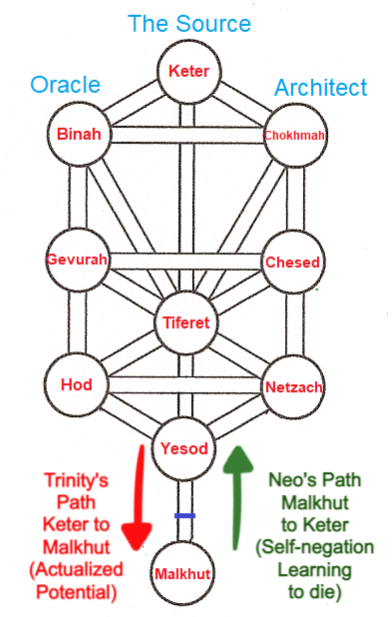
In the Matrix story, Neo’s “path of the one,” runs from the concealment of the lowest Matrix world “up to” the Source. This is considered the ‘masculine’ path in the sense of being one of “self nullification,” beginning in the ego-centric reality of the Matrix world.
This constant state of selflessness is the path of repair for Neo, which was that of the trilogy, all the way to the point of him dying (in order to progress further, as mentioned earlier).
The feminine path runs the opposite way, from the ‘nothingness’ of Keter to Malkhut:
Malchut, the last sefirah that manifests itself in this world, represents the feminine … Unlike the six sefirot whose direction is outward, it represents the internal, inner mode. It is the axis or focal point at the center of the six directions. Malchut and the feminine represent the state of being… While the masculine quality is characterized by a flurry of activity, malchut and the feminine represent the state of being.
“Malchut and the Feminine,” Chana Weisberg
Tikkun Shekinah, Rabbi Moshe Steinerman
Kabbalah associates the six ‘masculine’ sefirot/emanations with the aspect of ‘time periods’:
These six Holy Emanations that were the cosmic “DNA” for the six days of creation, and, subsequently, the six millennia of history that have followed.
“Prayer #7 – Hear O Israel Part II,” Rabbi Pinchas Winston
Recall that the concept of the masculine ‘six,’ in terms of time periods, was explained by the Architect:
I prefer counting from the emergence of one integral anomaly to the emergence of the next, in which case this is the sixth version.
During these six iterations of the One, leading into this final phase (the ‘exile’), the feminine aspect remained passive. Amazingly, this is described in terms of a “forced state of separation,” just as the Analyst perpetuated with Trinity and Neo:
In Kabbalistic terms, it is explained that the sefira of Malchut (“sovereignty”) reflects the feminine dimension. During the periods of exile, Malchut is in a state of descent and does not receive direct influence from the other sefirot. Metaphorically, this condition is described as a woman in an enforced state of separation from her husband.
“Kabbala, Redemption and Femininity,”
This not only changes at the end, but the feminine even has an aspect of being ‘above’ the masculine, in terms of her connection to Keter, the crown, which is ‘above’ the body.
Conversely, in the Era of the Redemption, “a woman of valor will be the crown of her husband” (Proverbs 12:4). The higher Source of Malchut will be revealed, the direct bond between Malchut and the other sefirot will be reestablished, and Malchut will become a source of vital influence, renewing the totality of existence.
“Kabbala, Redemption and Femininity,”
The future of the sefirotic structure (and thus, of humanity) consists of three stages: an original stage characterized by ontological equality between the masculine and feminine principles; an intermediary stage – the current state of Creation – consisting in a weakening of the feminine principle, and, finally, the leap into a new (Messianic) hierarchy that translates into the ascension of the feminine, within the sefirotic structure, towards a place equal to, or even more elevated than that of the masculine.
“A female Messiah? Jewish mysticism and messianism in the seventeenth and eighteenth centuries,” Cristina Ciucu
What we are now entering is the seventh and final stage leading to the freeing of humanity. This seventh stage is associated with the emanation of Malkhut, which represents a feminine sphere that is directed inward. (See our 2020 article, Elevation of the Feminine.)
Trinity, who in the trilogy was in a role supportive of Neo and his path, appears to be ‘nothing’ well into The Matrix Resurrections (quite dead, actually).
However, Malkhut is simply waiting to be awakened. As expected with the Matrix, it comes down to ‘choice’ – in this case, Trinity’s:
“But what matters is that this is her (Trinity’s) choice.”
Sati
And in the cafe scene when it seems like she might remain ”dead in the Matrix” (as Morpheus called it), she chose wisely – to become Trinity – and live.
This feminine path … is about learning to choose life, in the most profound sense of the word. It is no wonder that Chava (‘Eve’ in the Genesis account) is called “mother of all life.”
Keter-Malchut, Sarah Yehudit Schneider
Of course, let’s not discount Neo, whose righteousness was the “cause and effect” to her coming alive.
The Shekinah is always on earth … but a righteous person actualizes the divine potential in the world.
Daniel Matt, Zohar and Kabbalah
